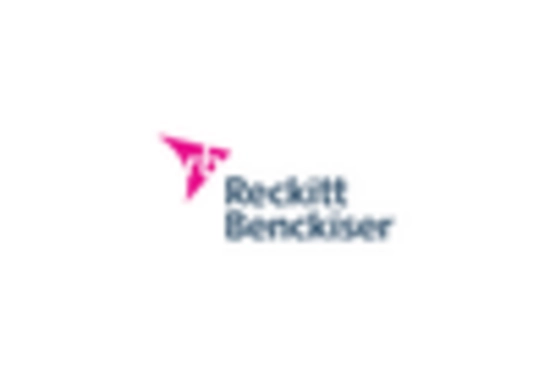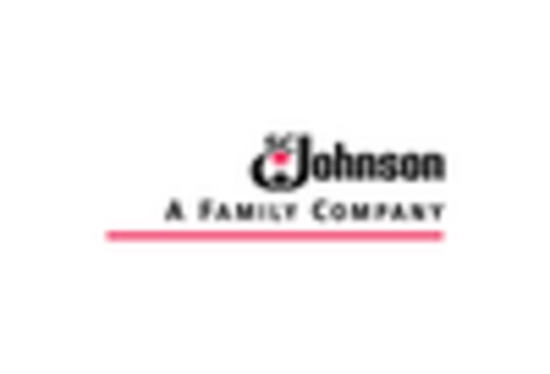Rising Hygiene Awareness
The increasing awareness regarding personal hygiene is a primary driver for the Liquid Hand Soap Market. Consumers are becoming more conscious of the importance of handwashing in preventing the spread of germs and infections. This heightened awareness is reflected in market data, which indicates a steady growth in demand for liquid hand soaps, particularly in households and public facilities. The Liquid Hand Soap Market is experiencing a shift as consumers prioritize products that promote health and cleanliness. As a result, manufacturers are responding by enhancing their product offerings to include antibacterial and moisturizing properties, catering to the evolving preferences of health-conscious consumers. This trend is likely to continue, suggesting a sustained increase in market growth as hygiene practices become more ingrained in daily routines.
Health and Wellness Trends
The ongoing trends in health and wellness are significantly influencing the Liquid Hand Soap Market. As consumers prioritize their well-being, there is a growing demand for products that support health and hygiene. This trend is evident in the increasing popularity of liquid hand soaps that contain natural ingredients and are free from harmful chemicals. Market data indicates that consumers are willing to pay a premium for products that align with their health-conscious values. Additionally, the Liquid Hand Soap Market is seeing a rise in demand for products that offer multifunctional benefits, such as moisturizing and antibacterial properties. This alignment with health and wellness trends is likely to drive continued growth in the market, as consumers seek products that contribute positively to their overall health.
Product Innovation and Variety
Innovation within the Liquid Hand Soap Market is a significant driver, as brands continuously seek to differentiate their products. The introduction of unique formulations, such as foaming soaps, gel-based options, and eco-friendly ingredients, caters to diverse consumer preferences. Market data reveals that consumers are increasingly drawn to products that offer additional benefits, such as skin nourishment and natural ingredients. This trend towards product innovation not only enhances consumer satisfaction but also fosters brand loyalty. Furthermore, the Liquid Hand Soap Market is witnessing a rise in the availability of specialized products, including those designed for sensitive skin or specific demographics, such as children. This variety allows consumers to select products that align with their individual needs, thereby driving overall market growth.
Increased Retail Distribution Channels
The expansion of retail distribution channels is a crucial driver for the Liquid Hand Soap Market. With the rise of e-commerce and the diversification of retail formats, consumers have greater access to a wide range of liquid hand soap products. This increased availability is reflected in market data, which shows a surge in online sales and the presence of liquid hand soaps in various retail environments, including supermarkets, pharmacies, and specialty stores. The convenience of purchasing liquid hand soaps through multiple channels enhances consumer engagement and drives sales. As retailers continue to adapt to changing consumer behaviors, the Liquid Hand Soap Market is likely to benefit from enhanced visibility and accessibility, further propelling market growth.
Sustainability and Eco-Friendly Products
The growing emphasis on sustainability is reshaping the Liquid Hand Soap Market. Consumers are increasingly seeking eco-friendly products that minimize environmental impact. This shift is prompting manufacturers to adopt sustainable practices, such as using biodegradable packaging and natural ingredients. Market data suggests that products labeled as environmentally friendly are gaining traction, with a notable increase in sales for brands that prioritize sustainability. As consumers become more environmentally conscious, the demand for liquid hand soaps that align with these values is expected to rise. This trend not only influences purchasing decisions but also encourages companies within the Liquid Hand Soap Market to innovate and develop greener alternatives, potentially leading to a more sustainable future for the industry.


















Leave a Comment